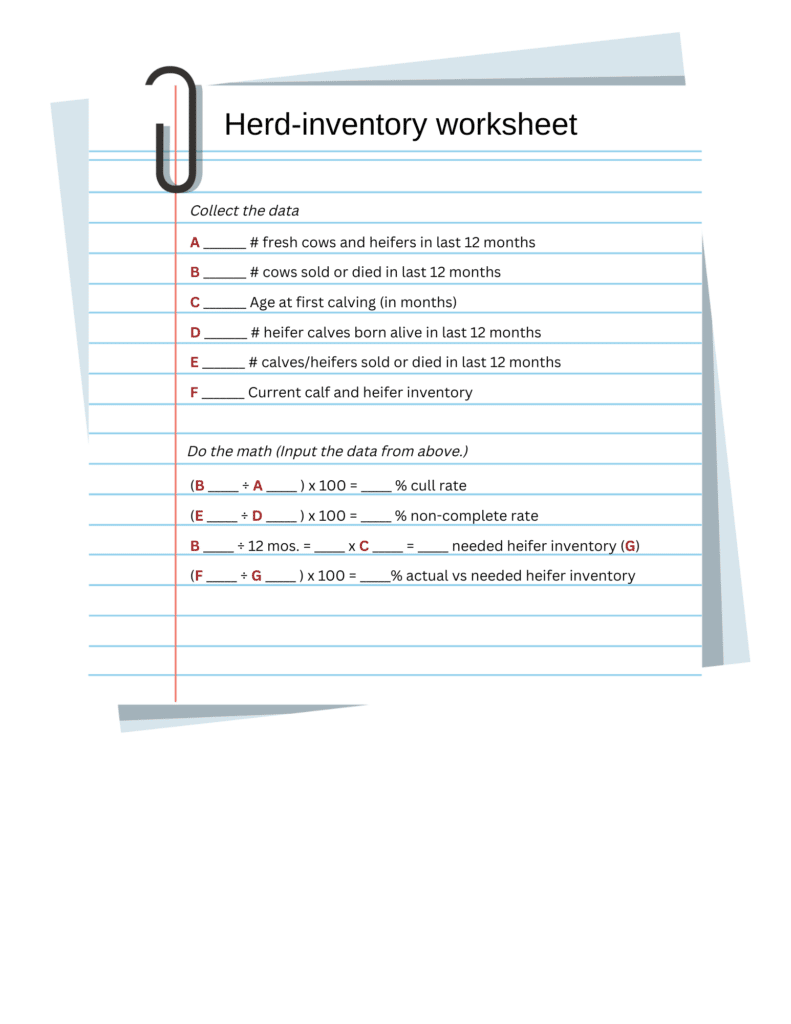Cole Mark, Director of Consulting and Profit Strategies, CentralStar Cooperative
Growing up on a 60-cow dairy, I remember being ecstatic if we had a run of three or four heifer calves in a row. But times have changed. Historically, the main goal of reproduction was to create a replacement heifer. Today, that goal has shifted to create a fresh cow; the calf, or at least many of them, are simply the byproduct. Producers are now focused on intentionally reducing the number of heifer calves being produced and raised. So how did we get here, and more importantly, what is the right number of heifers to raise?
The backstory on what led the industry to this point is long, complex, and full of boring math. But ultimately, it boils down to three main areas.
Pregnancy rates and reproductive efficiency have excelled in the post-rBST era. We are now making more calves from the same number of cows, in a shorter period.
The industry is now very good at making pregnancies; therefore, we have leveraged sexed semen by using the most elite genetics to accelerate genetic progress. It’s a great asset that resulted in more total females than needed.

Calf mortality rates have plummeted in the last ten years because of advances in calf rearing. Meaning, more of the heifer calves born make it to adulthood.
These are all great problems to have, but now it’s time to adjust. So, how many calves does your dairy need? The quick answer is around 85% of the lactating herd. The right answer though is, “it depends.” There are many variables that play into this figure, and to make accurate and precise predictions, they all need to be accounted for.
First, we must determine the number of replacements you need to join the milking string each year. This is primarily dictated by the cull rate. The cull rate is the number of cows that were sold or died in 12 months divided by the number of calvings in 12 months. The number of cows sold and died each month is the number of fresh heifers needed each month.
The number of fresh heifers needed, plus your non-completion rate, is the number of calves you need to raise. The non-completion rate is the number of heifer calves that are born alive, but never make it to the milking string.
All these calculations require data. The accuracy and precision of your data dictates how accurate and precise the calculations we make are regarding your inventory and the breeding strategy. The more accurate your data, the tighter we can keep the margins. All this leads back to my original answer regarding how many heifers you need; “it depends.”
Heifers are wildly expensive to raise, and mature cows turn a much higher-daily revenue. The first approximately 35,000 pounds of milk a cow produces goes toward recuperating rearing costs, meaning none of the two-year-olds in your herd are turning a true profit. So, if your heifer-inventory is more than 85% of the cow population, you are at risk of driving up your cull rate, and driving down the percent of mature, profitable cows in the herd. Furthermore, you have added rearing costs in raising a bloated inventory of heifers.
You can do your own math using the heifer-inventory worksheet on this page. If you find your cull rate is >32%; heifer non-completion rate >15%; actual heifer inventory >110% of needed heifer inventory, or you are planning to change herd size, talk with your CentralStar team. CentralStar consultants work with hundreds of farms to help them best manage heifer inventories, while creating a strategy to maximize genetic progress and profitability.
